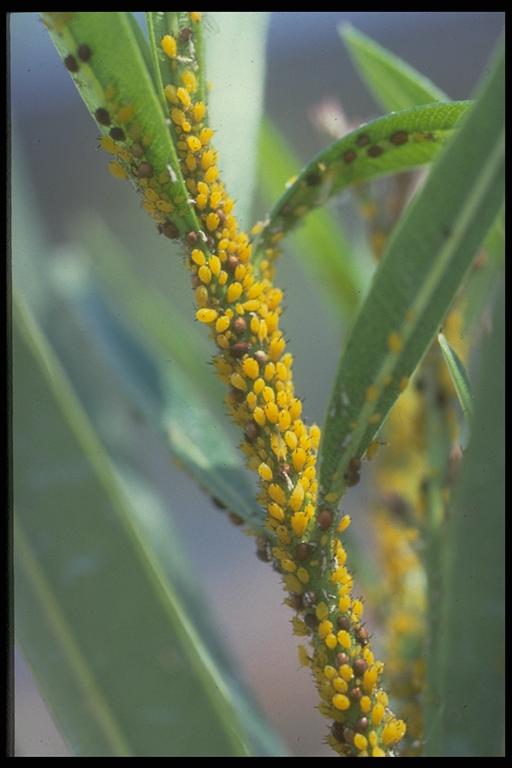
Oleander aphids,
Aphis nerii Boyer de Fonscolombe
(Homoptera: Aphididae).
Photo by Drees.
Common Name: Oleander aphid
Scientific Name: Aphis nerii Boyer de Fonscolombe
Order: Homoptera
Description: This is a bright yellow aphid with black legs and cornicles (stalks on the back of the abdomen).
Life Cycle: Aphids appear on new shoots, buds and foliage in the spring. Large populations develop over the summer.
Habitat and Food Source(s): Host plants are restricted to oleander, butterfly weed and milkweed. Aphids do not usually cause plant health to suffer, although their high numbers and accumulation of sooty mold associated with honey dew expelled can be a nuisance and be unsightly. In most cases, many of the oleander aphids become infested with a parasitic wasp, Lysiphlebus testaceipes (Cresson) (Hymenoptera: Braconidae). Infested aphids swell, turn brown and die. The wasp cuts a hole in the back of the aphid’s abdomen to emerge.
Pest Status: One of the most common aphids on a wide variety of agronomic and horticultural plants; heavily infested plants can be injured or killed; medically harmless.
For additional information, contact your local Texas A&M AgriLife Extension Service agent or search for other state Extension offices.
Literature: Johnson & Lyon 1988.